Employee advocacy is the practice of encouraging and enabling employees to actively share and promote their company’s values, content, and achievements through their personal networks – particularly on social media platforms. When employees speak on behalf of their organization, it feels more genuine, more human, and ultimately, more credible than any corporate campaign.
As digital platforms become more crowded and consumer trust in brand messaging continues to decline, employee voices are emerging as a powerful alternative. Research suggests that content shared by employees receives 8x more engagement and leads generated through employee advocacy programs convert 7x more frequently than other sources.
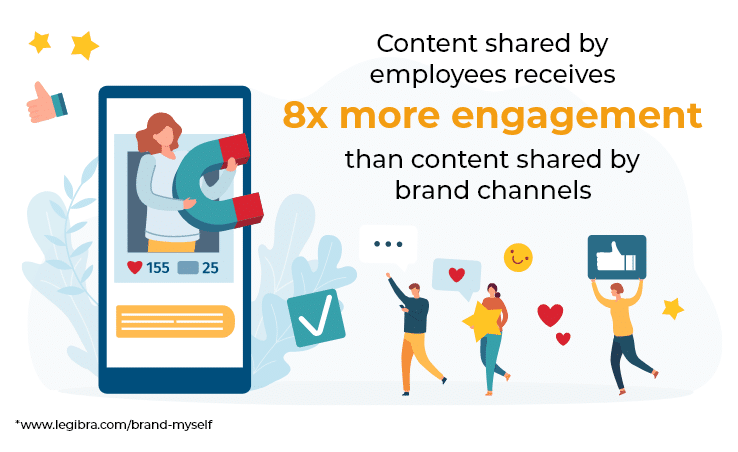
This growing shift is especially relevant in the Indian context. Whether it’s a homegrown startup, a D2C disruptor, or a global IT powerhouse, businesses are operating in a hyper-competitive environment where trust and visibility are both hard-earned and short-lived. Employee advocacy programs offer a way to cut through the noise, boosting brand awareness, enhancing employer branding, and even supporting sales enablement.
Yet despite its potential, many companies continue to face low employee engagement when it comes to brand advocacy. Employees either don’t know what to share, don’t feel motivated, or worry about overstepping boundaries.
In most cases, the real issue isn’t unwillingness – it’s the absence of a well-defined employee advocacy program and a strategy that aligns with your people, platforms, and brand voice. Without the right framework, even the most enthusiastic employees are left directionless.
Your employees know your brand, believe in its mission, and can represent it with unmatched authenticity. When activated well, this internal network is not only more cost-effective, but also more sustainable, trustworthy, and impactful over the long term.
In this article, we’ll explore:
-
10 actionable employee advocacy strategies for Indian organizations – from IT giants to fast-growing startups.
-
Real-world examples of companies driving brand trust and employee engagement through employee advocates.
-
How employee advocacy platforms can make advocacy simple, rewarding, and measurable at scale.
10 Smart Employee Advocacy Strategies for Indian Brands to Build Trust & Visibility
So how can Indian companies tap into this massive potential and turn everyday employees into impactful brand ambassadors? Here are 10 employee advocacy strategies tailored to the Indian workplace that can turn good intentions into real, measurable impact.
1. Build an Advocacy-First Culture in Your Company
In many Indian workplaces, a hierarchical company culture still shapes how employees communicate (especially on public platforms). Employees often hesitate to post about work on LinkedIn or Twitter, fearing it may be seen as overstepping or self-promotional.
To break this silence, organizations must build a company culture where sharing is seen not just as acceptable, but as valuable. That shift starts at the top. When leadership openly shares success stories, acknowledges team wins, and talks about the company’s purpose online, it signals that employee advocacy plan is welcomed and expected.
This top-down change is already underway at companies like Infosys, where executive teams are being empowered to lead by example on social media platforms. In collaboration with Sociabble, Infosys launched The Influential You – an eBook focused on helping business leaders navigate social selling and run successful employee advocacy programs.
When leaders advocate authentically, it encourages employees follow. And that’s how an advocacy-first company culture takes root – not by mandate, but by example.
2. Identify the Right Employee Advocates
While every employee has the potential to be an advocate, not everyone is naturally inclined toward brand promotion. The key is to start with those who already show signs of influence – employees who are active, vocal, and aligned with your company’s mission.
Look for individuals who:
-
Are consistently active on LinkedIn, Twitter (X), or other relevant platforms
-
Have a strong personal brand or following within their domain
-
Are genuinely enthusiastic about the company’s work, culture, or values
These early champions can serve as the foundation of your employee advocacy program. Their posts tend to be more authentic, more relatable, and often set the tone for broader participation across teams.
A great example is the Renault Group. To boost brand visibility and unify messaging across 130+ countries, Renault identified and activated 1,200 employee ambassadors across roles – advocates from factories, engineering teams, and regional offices.
The results were powerful: in just one year, Renault doubled its employee advocacy reach. With personalized support, multilingual access, and curated content on Sociabble, these advocates consistently shared brand news, innovation updates, and industry thought leadership – amplifying the brand’s voice at a global scale.

3. Make Sharing Easy with the Right Tools
Even the most enthusiastic employees won’t share if the process feels time-consuming or unclear. Simplicity is everything – the easier it is to find and post content, the more likely people are to engage.
That’s where dedicated employee advocacy platforms like Sociabble come in. Instead of expecting employee advocates to create content from scratch or dig through scattered links, Sociabble encourages employees to:
-
Access pre-approved content ready to share in one click
-
Receive AI-powered post suggestions tailored to their network and areas of interest
-
Earn points, badges, and leaderboard rankings for their engagement
This frictionless experience is why global companies using Sociabble report significantly higher employee participation and engagement on LinkedIn. When content is curated, localized, and mobile-friendly, sharing becomes second nature – even for the busiest teams.

4. Deliver Employee Advocacy Training on Brand Messaging & Social Media Best Practices
A major reason employees hold back from posting is uncertainty.
“What if I say the wrong thing?”
This is especially common in Indian workplaces, where professional boundaries on social media platforms are still evolving.
To build confidence, companies must invest in simple, practical training for brand advocacy. Help employees understand how to represent both themselves and the brand online, by offering sessions on:
-
Writing engaging and authentic LinkedIn posts
-
Personal branding and thought leadership
-
Professional etiquette and engagement on social platforms
Taking this one step further, advanced employee advocacy platforms now offer AI-powered writing assistance. Sociabble’s “Ask AI” feature supports employees in content creation by generating original, tailored post suggestions. This AI is trained to reflect both company guidelines and the employee’s personal voice, helping them overcome ‘blank page syndrome’ while still sounding authentic.
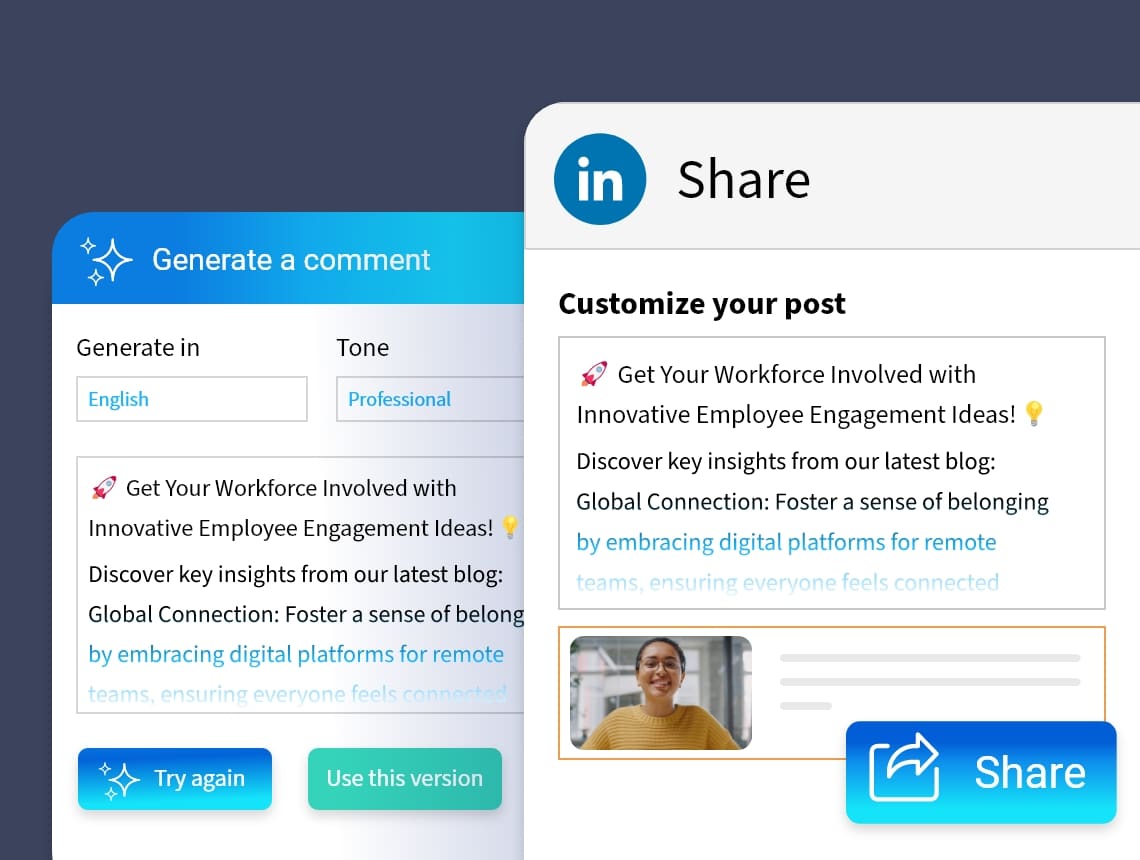
For example, HCL Technologies conducts LinkedIn workshops for employees, encouraging them to build strong professional profiles and contribute as thought leaders online, enhancing both personal visibility and employer reputation.
Bonus tip: Let employees submit their own LinkedIn posts to your employee advocacy platform. Highlighting these posts gives them more exposure internally and encourages peers to engage; making the employee advocacy program more collaborative and rewarding.
5. Use Gamification to Boost Employee Participation
Indian employees are highly responsive to competition and recognition. Gamification taps into this cultural insight, making employee advocacy feel less like a task and more like a challenge to win.
Sociabble’s built-in gamification framework is designed to encourage employees and drive participation through:
-
Leaderboards and performance tracking to identify top advocates
-
Recognition badges and rewards for key milestones
-
Custom campaigns and engagement challenges that align with business goals
A compelling example comes from Microsoft France, which partnered with Sociabble to launch House of Fans – a private, gamified employee advocacy platform. Designed to engage passionate brand followers—including employees—the initiative used badges, points, quizzes, and content-sharing challenges to spark ongoing participation. Every member had a personal profile with their badge collection, leaderboard rank, and post history, creating a visible sense of progress and recognition.
Within the first three months, the platform generated 400,000 engagement actions, over 15,000 social shares, and reached 3 million users organically. Remarkably, 75% of participants engaged daily, showing just how powerful gamification can be when it’s tied to community, achievement, and shared purpose.
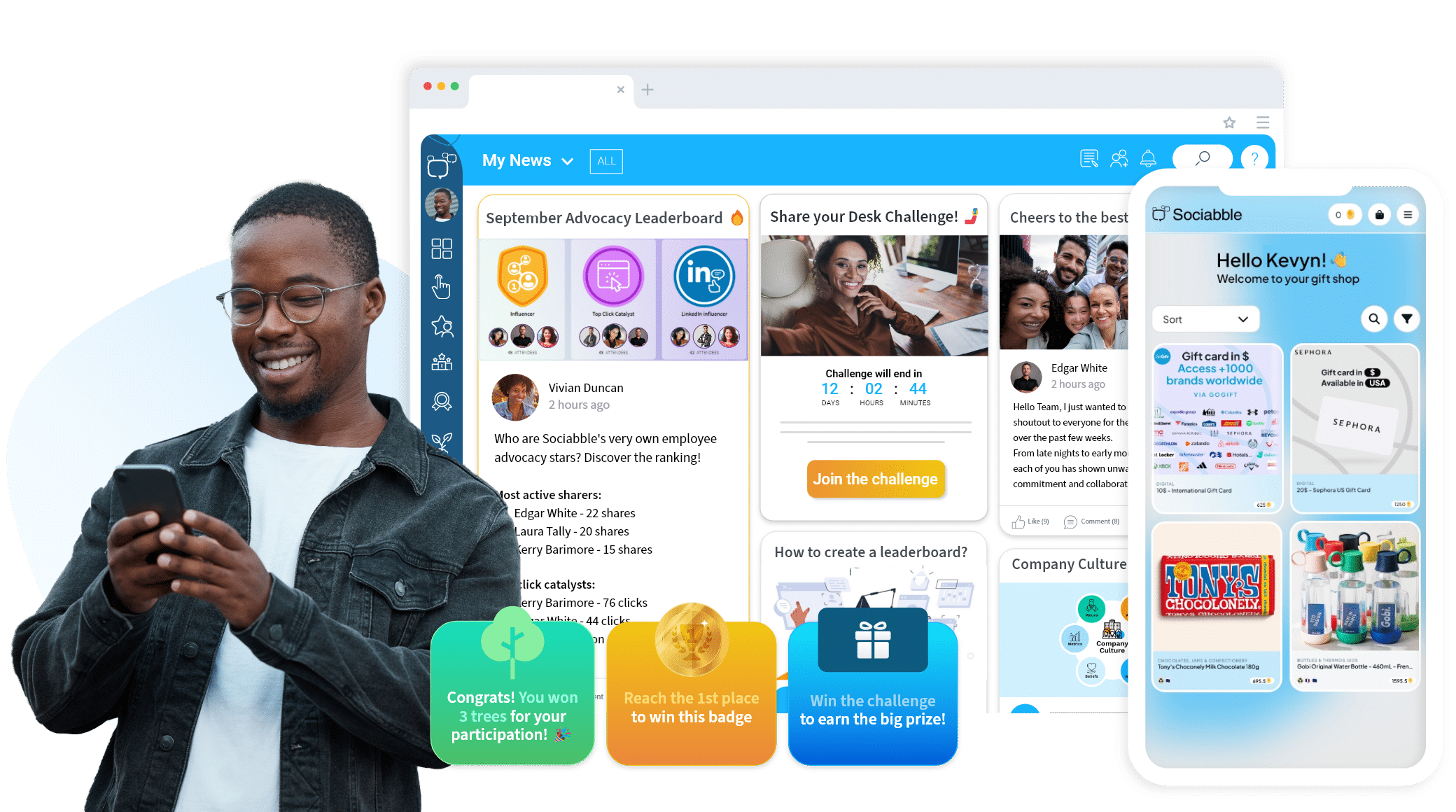
6. Recognize & Reward Active Advocates
Employee advocacy strategies only work when employees feel seen, appreciated, and empowered. Recognition isn’t just a nice gesture – it’s a key driver of sustained participation.
Whether it’s non-monetary perks like exclusive access to events or mentorship, monetary incentives like bonuses or gift cards, or public recognition in newsletters and internal comms – companies must celebrate their advocates in ways that feel meaningful.
Capgemini’s global employee advocacy program, built on Sociabble, exemplifies how recognition fuels long-term impact. With over 365,000 employees worldwide, Capgemini shifted its focus from content amplification to influence, enabling employees to grow as thought leaders and digital brand ambassadors.
To sustain this at scale, the company implemented community managers who provide regular feedback, highlight standout contributors, and encourage peer recognition. Personalized training and internal narratives help employees understand the individual value of advocacy – from building a personal brand to expanding professional networks.
When recognition is consistent and well-aligned with personal growth, employees become stronger, more invested advocates.
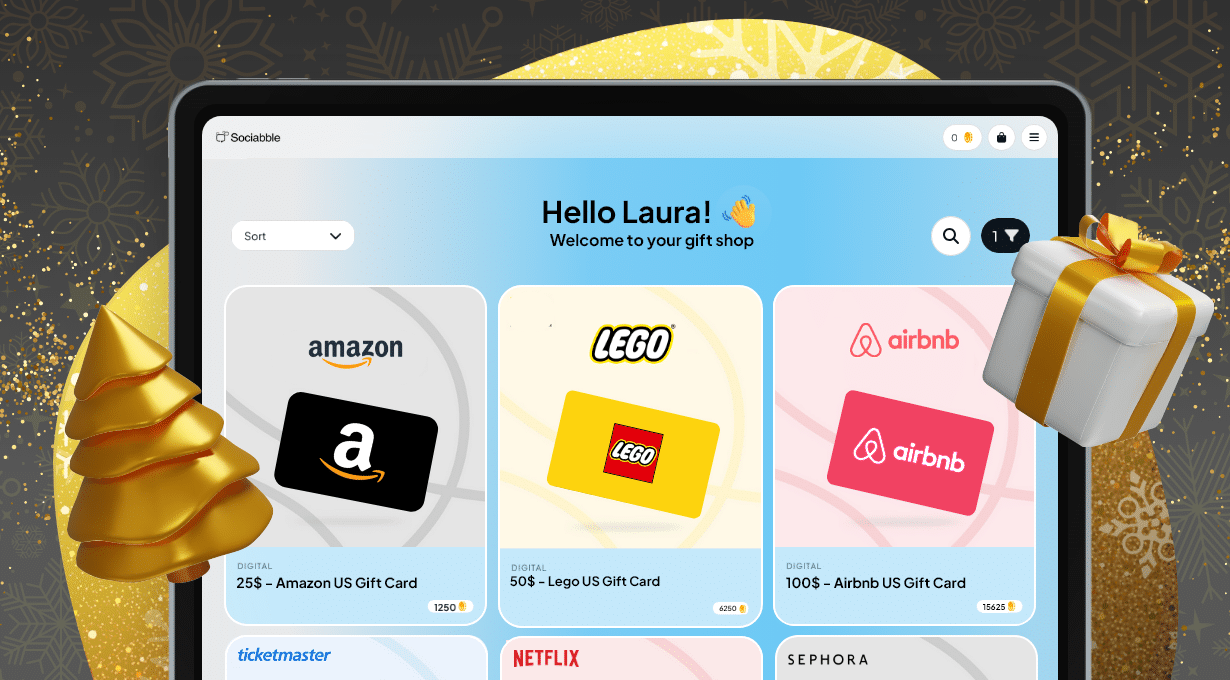
7. Get Leadership Involved in Employee Advocacy
Employee Advocacy must start at the top. When CXOs and managers actively share insights, company news, and culture highlights, they signal that it’s encouraged and expected.
When they’re visible on platforms like LinkedIn, employees are more likely to feel confident and inspired to participate. For instance, Sundar Pichai, CEO of Alphabet, regularly shares global updates and perspectives on innovation, while Kunal Bahl, Co-founder of Snapdeal, actively discusses startup strategy, funding, and entrepreneurship on LinkedIn and Twitter.
When leaders walk the talk, employee advocacy receives a natural push. It becomes part of how the organization communicates.
8. Centralize Employee Advocacy with an Internal Hub
A vary common barrier to employee advocacy programs is that people simply don’t know what to share or where to find it.
Relying on scattered channels like WhatsApp, Telegram or email threads leads to inconsistent participation and lost opportunities. To make employee advocacy truly scalable, companies need a centralized content hub.
With Sociabble’s employee advocacy platform, organizations can:
-
Curate and organize all shareable content in one place – company posts, curated third-party articles, and UGC
-
Offer a mobile-first experience, so employees can browse and share on the go
-
Provide AI-powered post suggestions tailored to each user’s network and interests
This centralized and intuitive experience is why companies using Sociabble often see higher employee advocacy adoption rates compared to traditional email-based programs. When content is easy to find and even easier to share, participation in employee advocacy programs become second nature.
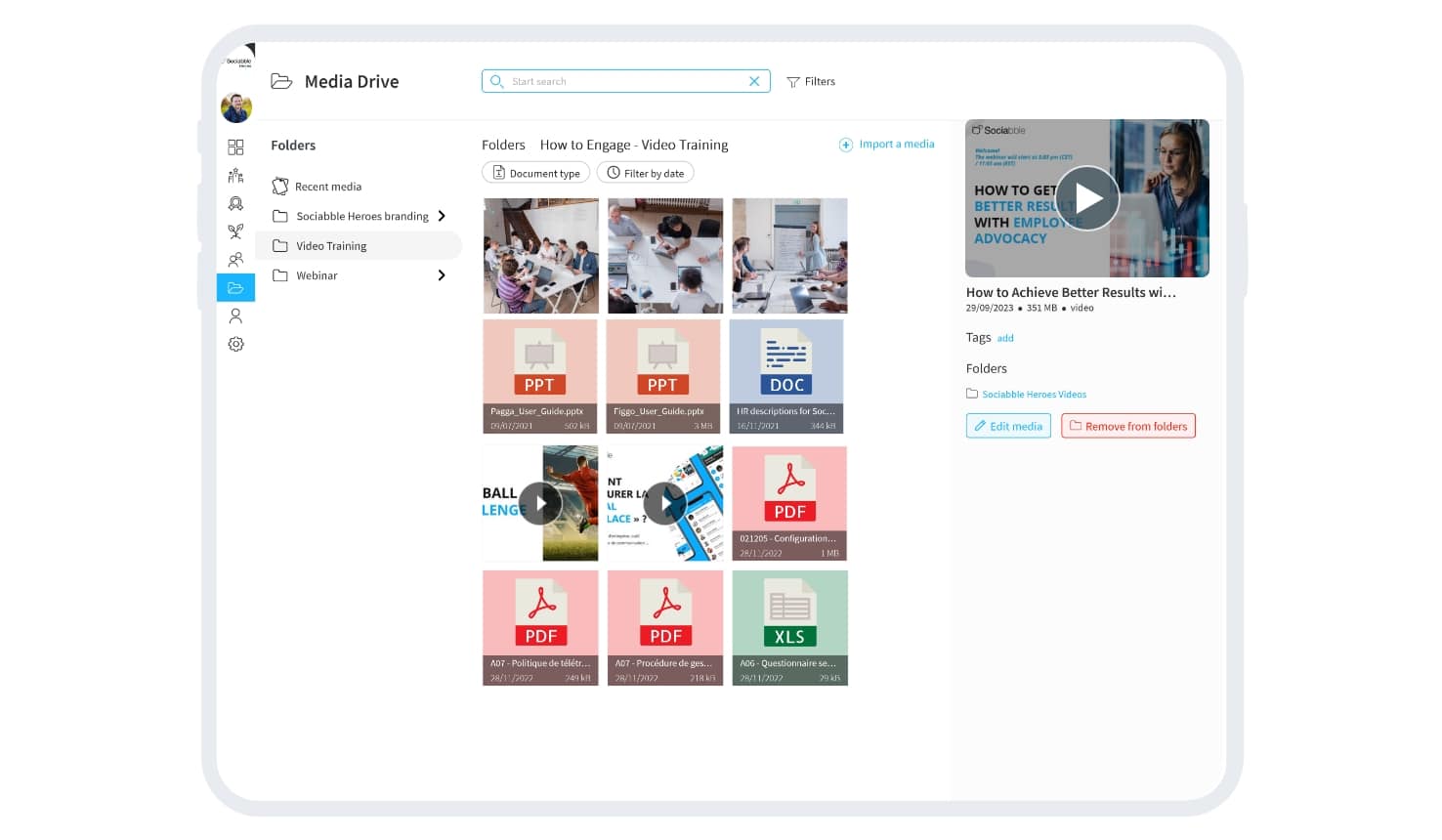
9. Align Employee Advocacy with Employee Career Growth
Employee advocacy programs become truly impactful when it’s not just about promoting the company, but also about building the employee’s personal brand.
When employees see clear benefits for their own visibility and career progression, they’re far more likely to participate in employee advocacy programs. Help them craft thought leadership content around industry trends, project learnings, or innovations they’re passionate about. This not only boosts credibility but positions them as experts in their field, further boosting your employee advocacy efforts.
HCLTech has tapped into this insight with its Ambassador Club, an award-winning employee advocacy program that turns employees into brand storytellers. Participants are encouraged to write blogs, share insights on LinkedIn, and grow their professional presence, while amplifying HCL’s brand voice in the process.
By aligning employee advocacy with career growth, you shift the narrative from “what employees should do” to “what employees get to do” – and that makes all the difference.
10. Track Performance & Optimize Your Strategy
Successful employee advocacy programs aren’t just about encouraging posts – it’s about understanding what works and refining your approach over time.
To turn employee advocacy into a measurable business asset, companies need to track key metrics like:
-
Engagement rates (likes, shares, comments)
-
Top-performing advocates and content
-
Traffic and leads generated from employee shares
This is where tools like Sociabble play a crucial role. The platform offers real-time analytics dashboards that allow communication and marketing teams to monitor performance across teams, locations, and campaigns. You can identify what content resonates, which employees are driving results, and how employee advocacy contributes to business KPIs – like brand reach, employer branding, and even lead generation.
With these insights, you can continuously optimize content, targeting, and engagement tactics – transforming employee advocacy programs from a one-off initiative into a long-term strategic advantage.
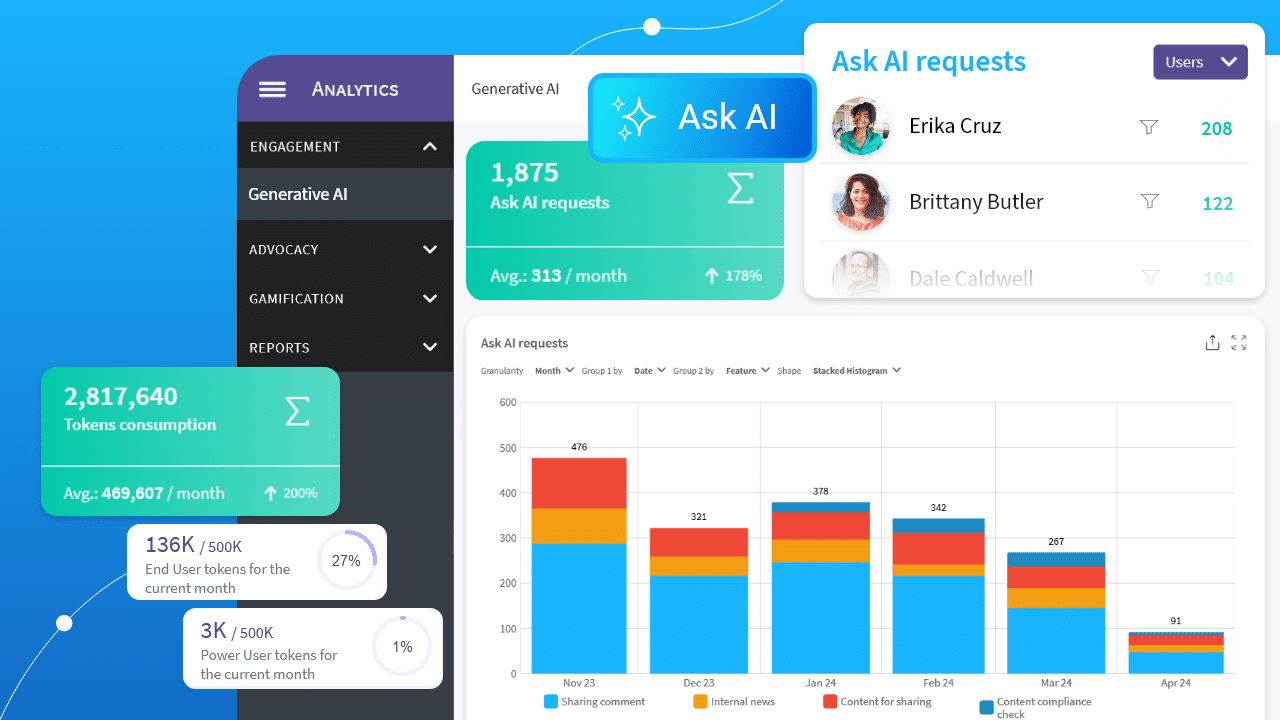
Conclusion: The Future of Successful Employee Advocacy in India
As we move into an era where people trust people more than logos, the question is no longer whether Indian companies should invest in employee advocacy. It’s how quickly they can get it right – and how ready they are to unlock its full potential.
In a time when digital trust is declining and audiences are tuning out brand-led content, employee advocacy stands out as a uniquely human advantage. It’s a strategic lever that can reshape how Indian companies build visibility, credibility, and connection at scale.
From D2C startups to global IT giants, organizations across India are beginning to realize that their greatest influencers are already on the inside. Employees bring authenticity, reach, and relatability that no paid campaign can replicate. But for employee advocacy programs to succeed, it needs to be more than a request—it needs to be a system.
The companies leading the way are those who:
-
Empower employees with the right tools – mobile-first, AI-enabled, and integrated with daily workflows
-
Incentivize employee advocacy programs through gamification, recognition, and career growth
-
Continuously analyze and refine their approach using performance insights and real-time data
With a platform like Sociabble, employee advocacy programs becomes scalable, compliant, and measurable, while still feeling personal and rewarding for every employee involved.
At Sociabble, we offer a platform that can streamline and enhance employee advocacy efforts, making it easier for businesses to leverage the power of organic engagement. We’ve already partnered with industry leaders like Coca-Cola CCEP, Primark, L’Occitane en Provence, and others to optimize their employee communications, and we’d love to discuss ways we can do the same for your organization.
Sign up for a free personalized demo and discover the ways we can help.
Want to see Sociabble in action?
Our experts will answer your questions and guide you through a platform demo.
